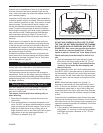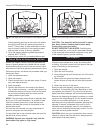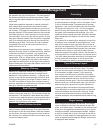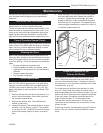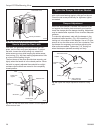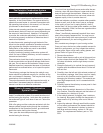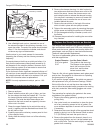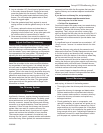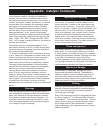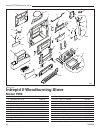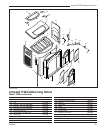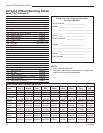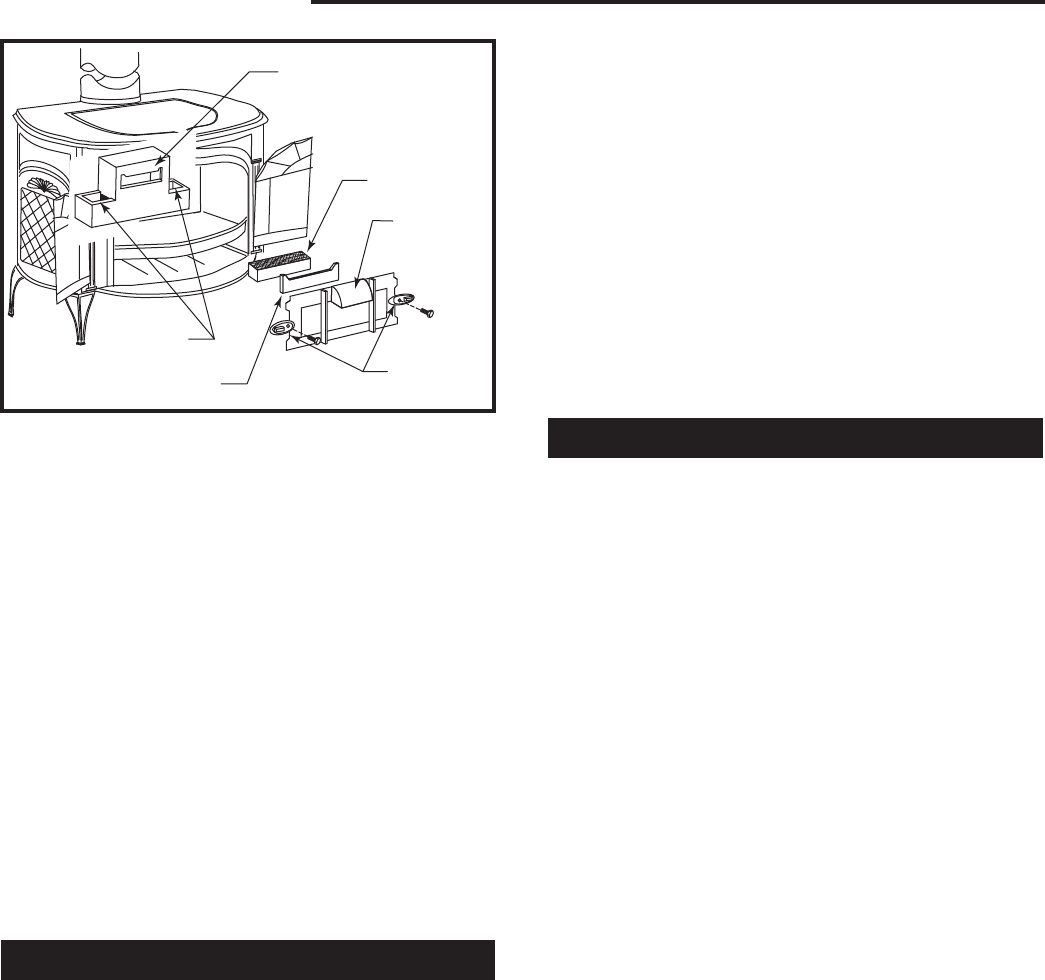
30
Intrepid II Woodburning Stove
2000966
6. Remove the damper housing. It is held in place by
two weld screws and two chrome acorn nuts in the
back of the stove. Loosen the chrome acorn nuts
and rotate the tabs to release the damper housing.
You may find it necessary to remove or loosen the
thermostat cover to access the one of acorn nuts
installed behind the cover.
7. Remove the rear airtube in the back of the stove
which is held in place with two phillips screws.
8. Take out the secondary probe by removing the upper
phillips screw and sliding the probe out of the hole.
9. Lift the damaged refractory chamber up and out of
the firebox.
10. Reverse the procedure for installing the new refrac-
tory chamber.
Replace the Stove Gaskets as Needed
The Intrepid uses fiberglass rope gaskets to make a
tight seal between some parts. With use, particularly on
those parts that move, gaskets can become brittle and
compressed, and can begin to lose their effectiveness.
These will need periodic replacement.
The sizes of replaceable gasket are listed below, along
with their applications.
Gasket Diameter ... And the Parts it Seals
5/16” wire gasket The griddle to the stove top
5/16” The damper to the upper fire
back; the front doors to the
stove front; and the door
halves to each other
There is a flat, die-cut gasket between each glass panel
and its door. See page 24 for information on replacing
the glass panel or its gasket.
If you need to change a gasket, first obtain an appropri
-
ate replacement from your Vermont Castings, Dealer.
Wait until the fire is out and the stove has cooled. Be
sure to follow the standard safety procedure for working
with dusty materials: Wear safety goggles and a dust
mask.
The procedure for replacing the gaskets is the same,
regardless of the gasket location.
1. Remove the existing gasket by grasping an end and
pulling firmly.
2. Use a wire brush or a screwdriver to clean the chan
-
nel of any remaining cement or bits of gasket. Re-
move stubborn deposits of cement with a cold chisel
if necessary.
3. Determine the correct length of the appropriate-sized
gasket by laying it out in the channel. Allow an extra
1-2” (25-50mm) and mark the spot to be cut.
4. Remove the gasket from the channel, place it on a
wood cutting surface, and cut it at the marked spot
with a utility knife. Twist the ends slightly to keep the
gasket from unraveling.
INTREPID II
ST533
remove catalyst
11/00
Refractory Chamber
Refractory Access Panel
Upper
Fireback
with Throat
Hood
Catalytic Block
Exhaust
Pockets
Clamps
ST533
Fig. 46 Removing the catalytic element.
9. Use a flashlight and a mirror, inserted into one of
the exhaust pockets of the refractory chamber, to in-
spect the probe. The end of the probe should extend
about 1” into the combustion chamber, and should
not show any signs of deterioration.
Use the stove in your usual manner for two weeks,
inspecting the chimney and the chimney connector
frequently.
If creosote does not build up as quickly as before, it is
likely that the performance change was caused by fly
ash deposits on the catalytic element. However, moni-
tor the chimney system for a few weeks to ensure that
proper performance continues.
If you continue to find a significant creosote buildup or if
you continue to see excessive smoke from the chimney,
the catalytic element will need to be replaced. Call your
dealer for information about a replacement.
NOTE: Use only replacement catalyst, part no. 160-
2521.
Replace Refractory Package
Refer to Figure 46.
1. Remove andirons.
2. Reach inside the stove with pair of pliers and turn
the two clamps that hold the fireback 90°. Turn the
let clamp clockwise and the right clamp counter-
clockwise. The bolts that hold these clamps are
tapped into the back as well as capped by chrome
acorn nuts in the back.
3. Grasp the upper fireback by its vertical ribs and re
-
move it, together with the attached throat hood. Pull
the left side out first.
4. Carefully remove the refractory access panel in front
of the catalytic block.
5. Gently slide the catalytic block out of the refractory
chamber.




